Humour in Street Photography: Capturing the Quirky and Waiting for the Unexpected
Street photography, at its best, is a reflection of life’s unpredictable charm. It’s not just about documenting reality but capturing the fleeting moments that speak louder than words—a sideways glance, an unexpected gesture, or, more often than not, a touch of humour. When we talk about humour in street photography, we are not referring to slapstick comedy or staged absurdities, but the subtle, quirky, and often serendipitous moments that turn the mundane into something magical.
The Subtle Art of Humour in Street Photography: Finding Magic in the Mundane
The streets, after all, are filled with contradictions, surprises, and sometimes a kind of natural absurdity that only a patient and observant photographer can notice. There’s humour in the way people interact with their environments, the unexpected juxtapositions that life throws at us, or even in the fleeting, unnoticed moments of human interaction. It’s this light-hearted, observational aspect that many street photographers chase—a brief, sometimes comical glimpse into the everyday that tells a deeper story about humanity.
In the hands of a skilled photographer, humour becomes more than just a laugh. It offers a way to see the world through a more playful, empathetic lens. After all, street photography is often serious, filled with social commentary, grit, and emotion. But humour? Ah, humour in street photography shows us the lighter side, the hidden smiles of a bustling city, the interactions we might otherwise overlook, or the ironies of urban life.
René Maltête: A Master of the Quirky Moment
When discussing humour in street photography, one name that immediately comes to mind is René Maltête, the French photographer who found comedy in the small, absurd moments of daily life. Maltête’s work is iconic in its ability to transform the mundane into something charmingly ridiculous. Born in 1930, Maltête had a keen eye for the quirky, and his photography reflects a love of the unexpected.
One of Maltête’s strengths was his ability to set up visually ironic or absurd situations without staging them. His photographs are full of delightful incongruities: people and objects interacting in ways that defy logic yet remain completely grounded in reality. Whether it was a pedestrian walking past a sign that seemed to mirror their actions or a perfectly timed shot of two figures seemingly connected by a comically misaligned street lamp, Maltête’s images made us laugh and think at the same time.
What makes Maltête so compelling is his ability to reveal the humour hidden in plain sight. He wasn’t interested in mocking or exaggerating his subjects but instead celebrating the delightful oddities that naturally occur in everyday life. His sense of timing was impeccable, and his photographs never felt forced. Instead, they were invitations to see the world differently, to notice the moments that most people would miss.
In a way, Maltête’s work reminds us that humour in street photography doesn’t always come from grand gestures or dramatic scenes. Sometimes, it’s as simple as capturing a perfectly timed shadow or the unexpected interplay of objects in the frame. Maltête’s photographs teach us to look for the absurd in the ordinary and to appreciate the humour in life’s small, fleeting moments.
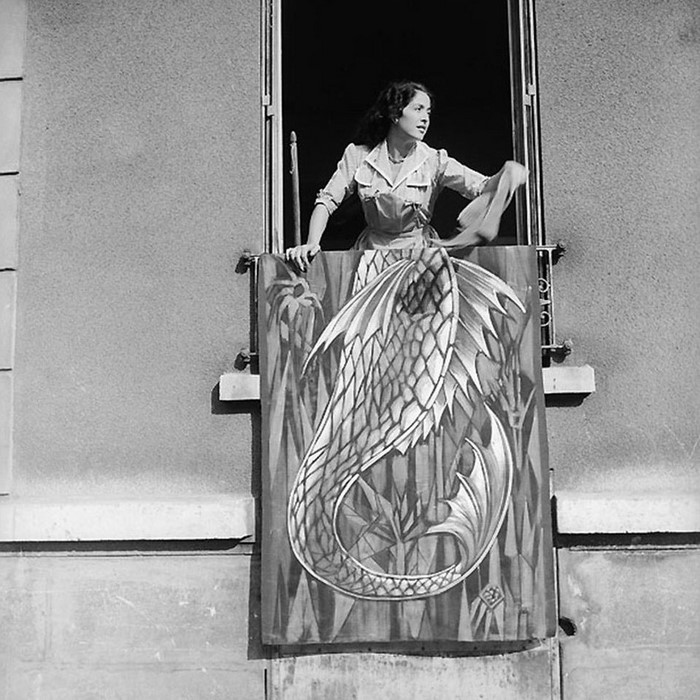

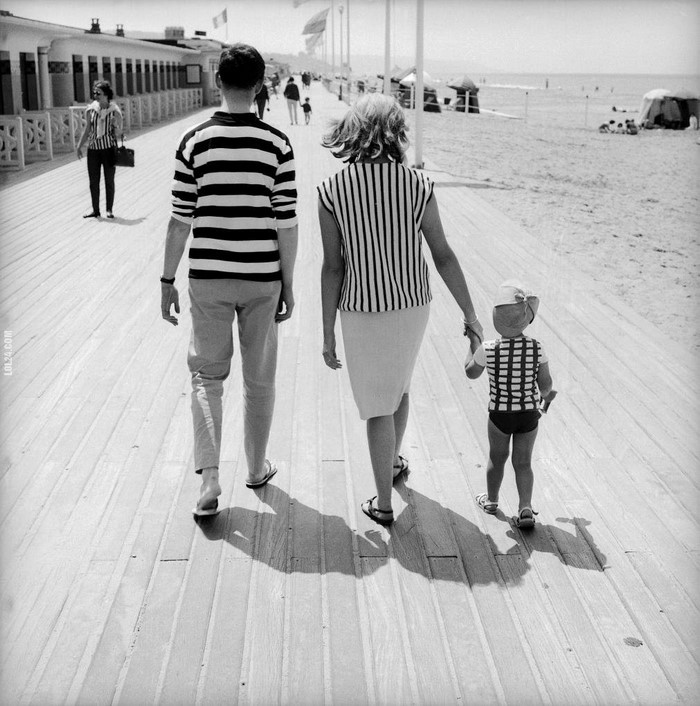

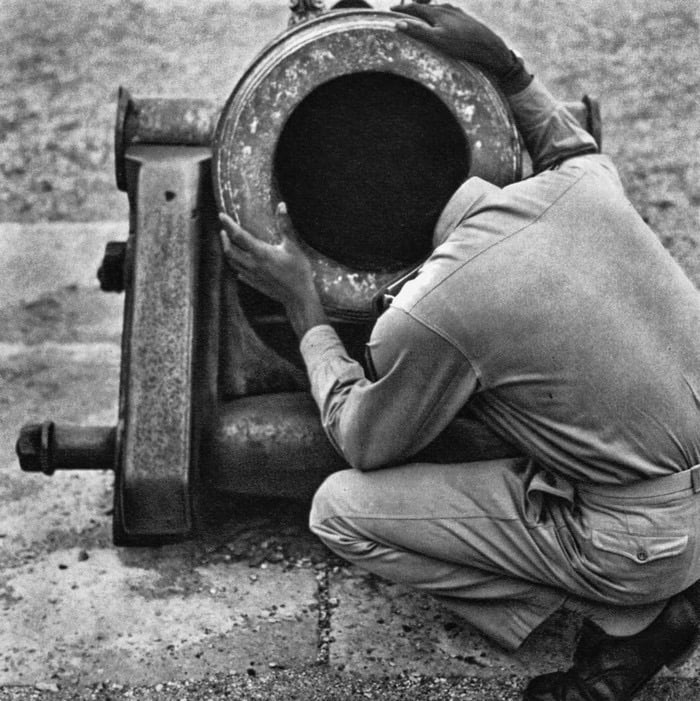


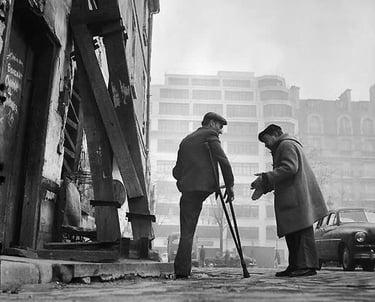
The American Twist: Elliott Erwitt
When it comes to humour in street photography from an American perspective, we cannot overlook the work of Elliott Erwitt, a photographer who, like Maltête, has a knack for finding comedy in the everyday. Born in France in 1928 but raised in America, Erwitt became known for his playful yet deeply humanistic approach to photography. His images are often infused with a sense of irony and humour that speaks to the quirks of human behaviour.
Erwitt is perhaps best known for his love of dogs, which feature prominently in his humorous works. His series of dog photographs offers a wry commentary on human nature, often depicting canines in poses or situations that seem almost too human. In one of his famous images, we see a dog standing on its hind legs next to a woman’s legs, the two figures almost mirroring each other. It’s an amusing and heartwarming shot, one that encapsulates Erwitt’s ability to find humour in the simplest interactions.
But Erwitt’s humour extends beyond his dog photographs. His work is filled with subtle jokes and visual puns—whether it’s a candid shot of a man who appears to be "wearing" a distant statue as a hat or the interplay of shapes and figures that make us double-take. Erwitt’s street photography is a reminder that humour isn’t something we impose on life; it’s already there, waiting to be captured by those with the patience and wit to find it.
In many ways, Erwitt’s humour is more approachable and relatable than the biting social commentary often associated with street photography. His work doesn’t aim to critique or expose; instead, it gently pokes fun at life’s absurdities, encouraging us to laugh along with him. And that’s the beauty of Erwitt’s approach: his humour is never mean-spirited but always full of warmth and affection for his subjects.
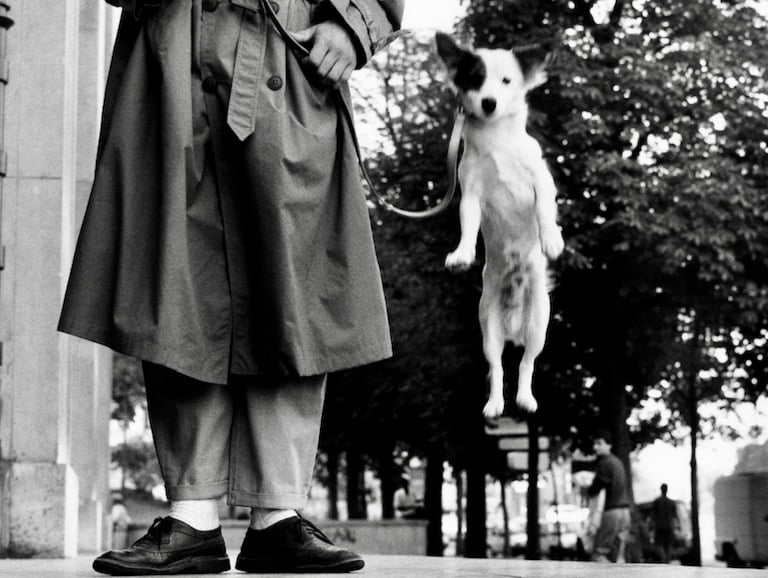



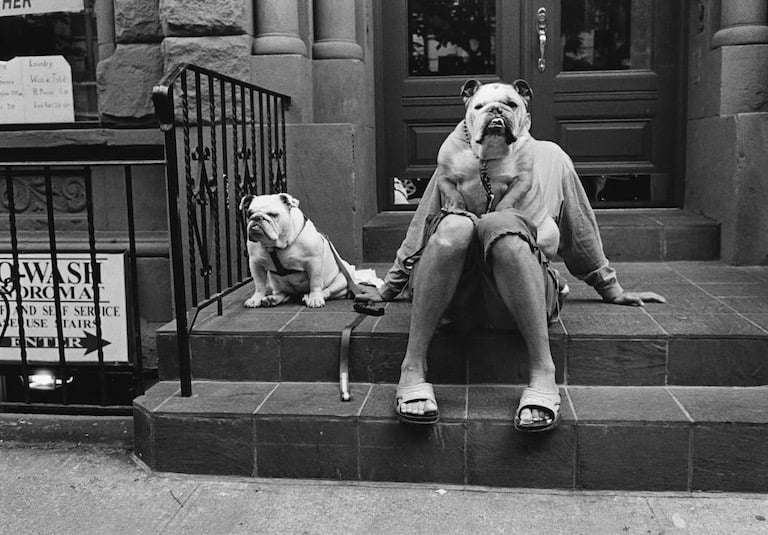

Patience and Timing: The Key to Humour in Street Photography
The essence of humour in street photography, as evidenced by photographers like Maltête and Erwitt, is in the waiting. To find these moments of comedy, you have to be patient, observant, and, above all, ready for the unexpected. Unlike other forms of photography, where you might have more control over the scene, street photography is all about anticipation. You’re looking for the right moment when something ordinary becomes extraordinary—when a small, seemingly insignificant detail turns the whole scene into a visual joke.
This is where the photographer’s eye is crucial. While today’s technology can capture images at lightning speed, no camera can replace the instinct and timing of a human photographer. Humour in street photography is not something you can plan; it’s something you have to feel, something you recognize just a second before it happens. It’s about being in the right place at the right time, ready to press the shutter when life throws a little joke your way.
The Human Touch
Humour in street photography goes beyond simply making us laugh—it connects us to the subjects. In those moments of quirkiness or absurdity, we see ourselves, our own lives, and our own human nature. Whether it’s a misaligned street sign, a couple caught in a strange interaction, or an animal doing something comically human, these photographs hold a mirror up to the world and invite us to laugh at our own ridiculousness.
That’s what makes humour in street photography so powerful. It doesn’t just entertain us; it reminds us of the shared experiences that connect us all. The awkward moments, the unexpected juxtapositions, the fleeting glances—they are all part of the human condition. And when we capture those moments on film, we’re not just taking a picture; we’re creating a story that resonates with everyone who views it.
In Conclusion: The Pursuit of the Quirky
For street photographers, the pursuit of humour is not just about getting a funny shot—it’s about capturing the unpredictability of life. Photographers like René Maltête and Elliott Erwitt teach us that humour is everywhere, in every corner, waiting to be discovered. It’s in the misaligned shadows, the playful interactions between people and objects, the moments when life defies expectation.
So, as you wander the streets with your camera in hand, keep an eye out for the quirky, the ironic, and the absurd. The world is full of humour if you have the patience and the vision to see it. And when you do capture that perfect moment of humour, you’ll know that you’ve done more than just take a photo—you’ve made someone see the world in a different, lighter, and more joyful way.
Copyright © 2025 Peter Pickering. All Rights Reserved. All Wrongs Reversed.
🌐 peterpickering.com | 🎺 sessionsonthegreen.com | 💜 isaacbcole.com | ▶️ YouTube Channel | 🌿 life.peterpickering.com


